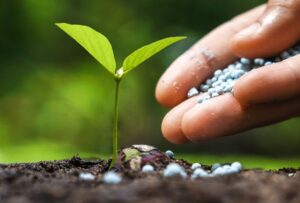
Prices for nitrogen fertilizers rose significantly in August 2023, while nitrate went up, with production in August breaking the record for the last two years, Infoindustry analytical agency reported.
According to the report, the new prices on CPT-EXW terms for ammonium nitrate reached 20-20.4 thousand UAH/t, which is 1.5 thousand UAH more than July prices, urea – 24-24.4 thousand UAH/t (+500), UAN-32 – 17.5-17.9 thousand UAH/t (+1000), UAN – 16-16.4 thousand UAH/t (+1000).
“The previous prices were in effect throughout August, and traders expected the price increase from the beginning of the third decade. The signal for the price increase was the fact that Poland and Lithuania raised the price of nitrate by 50 €/t. At the same time, in August, nitrate was still being shipped by factories at prices of 17.5-18.5 thousand UAH/t, CPT, and the recommended prices in warehouses were at 18.5 thousand UAH/t including VAT in big bags,” analysts said, citing information from Ostchem.
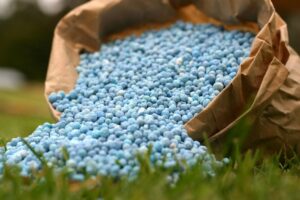
Ukraine will produce about 100,000 tons of nitrate in August and reach a record 220,000+ tons for all types of nitrogen fertilizers, the highest level since March 2022, according to industry analytical agency Infoindustria.
According to the report, growing demand for nitrogen fertilizers in the EU and Asian markets allows Ukrainian producers to hope for continued demand over the next three months.
“Thanks to successful nitrogen fertilizer sales in June and July, Ostchem was able to secure orders ahead of September, so it is now important to turn on production to the maximum. The task before the two plants is not insignificant, because, according to various calculations, the market for two months could have already sold from 120 to 150 thousand tons of nitrate and 60-70 thousand tons of urea, not to mention UAN and other fertilizers, demand for which is not yet fully sufficient – autumn field work in Ukraine continues,” the report says.
The plants in Cherkassy and Rivne are expected to produce up to 100,000 tons of nitrate in August. Cherkassy “Azot” will fulfill the maximum plan for urea and will load UAN by 60%, and “Rivneazot” will be able to launch limestone nitrate in the second half of August. So, in general, the plants will produce 220-225 thousand tons of products – an absolute record for the last 530 days of the war in Ukraine.
At the same time, Infoindustria analysts note that Odessa Port Plant and Dniprazot may be launched in September, which will bring additional volumes of nitrogen fertilizers to the country’s market. The enterprises will compete for the consumption-limited Ukrainian market and try their hand at the global market.
“Those producers who will not have time to sell nitrogen on the domestic market in August (when agroholdings buy) will be forced to hold it until February (when small and medium-sized agribusinesses will buy). Another sales option is to supply nitrogen for export. It is this option that will be of interest to everyone from September 2023. Fertilizer market conditions were complicated by Russia’s withdrawal from the “grain deal”, which affects the price level of agricultural products,” analysts predict.
Fertilizer market experts expect that due to a good harvest in 2023, if the crop is successfully sold, farmers have every chance to buy more fertilizers for the 2024 season.
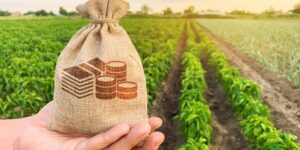
Ukraine resumed export of nitrogen fertilizers and exported 12 thousand tons in January-April this year, Infoindustriya news agency reported.
“The focus on export is not accidental: because of the decrease of activity in the domestic market of Ukraine producers will have to go to foreign markets (Turkey, Moldova, EU countries). We can even export complex fertilizers, although the cost of phosphate remains high, but the available potassium and the low price of gas opens other opportunities for producers”, – explained the director of the agency Dmitriy Gordeichuk.
According to the agency, in the four months of 2023, Ukraine also exported to Moldova and the EU 3 thousand tons of carbamide, about 2 thousand tons of lime nitrate, 565 tons of urea.
Now Ukraine has low gas prices compared to the EU countries, which allow Ukrainian producers to export profitably, primarily urea, the analysts emphasized.
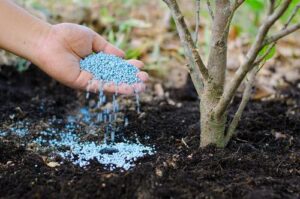
Last year Ukraine produced 1.13 million tons of nitrogen fertilizers, which is 4.6 times less compared to 5.2 million tons in 2021, while their import rose 3.1 times – to 4.3 million tons from 1.4 million tons, the Ministry of Agrarian Policy and Food of Ukraine said on Facebook.
The Ministry specified with reference to the head of the analytical project “Infoindustry” Dmitry Gordeichuk that the volume of domestic production of nitrogen fertilizers in Ukraine before the full-scale Russian invasion exceeded imports due to continuous operation of plants “Rivneazot”, “Azot” North Donetsk Association and “Azot” Cherkasy, “Dniproazot” also worked with intervals.
However, according to him, with the beginning of the war only two plants “Rivneazot” and Cherkasy “Azot” remained working, while Severodonetsk “Azot” stopped working and was significantly damaged by the occupants. Such changes significantly changed the statistics on the market for the worse: as a result, only 1.13 million tons of fertilizers could be produced in 2022, the lack of which compensated for the import of 4.3 million tons.
“The topic of fertilizer shortage is one of the most urgent for the agricultural sector and Ukrainian farmers, because we are waiting for the spring sowing season, which the whole world will be watching. Ukraine is one of the leading countries on the agricultural map and its production volume determines the world price on the grain market and the food security of the world. Accordingly, the liquidity of farmers is a topical issue for the Ministry of Agrarian Policy” – quotes Minister of Agrarian Policy Mykola Solskyy as saying.
According to the Minister, until July 2022 Ukrainian farmers were still able to buy fertilizers at pre-war prices, but in October the prices for ammonium nitrate rose from 27 thousand UAH / ton to 37 thousand UAH / ton, which created a critical situation for the Ukrainian farmers. He stressed that usually farmers are guided by the rule, according to which a ton of nitrate must not cost more than 2.5 tons of wheat and a ton of urea – not more than 3.0-3.5 tons of corn, while in 2022 these figures were exceeded two or three times.
Ministry of Agrarian Policy noted that today it is difficult to calculate the exact cost of fertilizers for modern Ukrainian agrarian, but the cost of basic nitrogen fertilizer per 1 ha of corn is approximately 8-9 thousand UAH without fertilizing and fuel costs, which have also increased in price. Therefore, the final amount is not attractive for the agrarian at the moment.
“Much depends on climatic conditions, because fertilizers work as a complex nutrition and the main thing is weather conditions. But if the agrarian will apply less fertilizer by 30% or more, then the drop in yield can be twofold. Therefore, support of international partners in this matter is very important to us, “- First Deputy Minister of Agrarian Policy Taras Vysotsky quotes it.
As previously reported, according to estimates of Group DF, the main fertilizer producer in Ukraine, the fertilizer market of the country in 2022 decreased by 45-50% – from 4.75 million tons to 2-2.9 million tons.
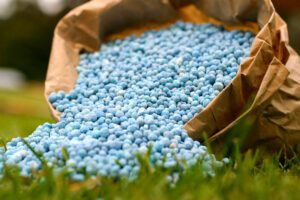
The quota for the export of mineral or chemical fertilizers, nitrogen (UKTVED code 3102) has been reduced from 210,000 tons per quarter to zero, that is, in fact, a ban on the export of these goods from the country has been reintroduced.
The corresponding resolution of the Cabinet of Ministers No. 759 of July 1 was published on its website on Thursday.
Earlier, immediately after the government meeting on July 1, its representative in parliament, Taras Melnichuk, said that nitrogen mineral fertilizers were excluded, along with oats, from the list of goods whose exports are subject to quotas, and are included in the list of goods whose exports are subject to licensing.
However, the published decree regarding oats confirmed this information, but refuted it regarding mineral fertilizers and actually tightened exports, and did not liberalize it.
As reported, nitrogen fertilizers were banned for export at the beginning of March, but at the end of March the government allowed their export within the quarterly quota of 210,000 tons, or 70,000 tons per month.

The Cabinet of Ministers of Ukraine instructed the Ministry of Agrarian Policy and Food to issue licenses for the export of nitrogen mineral and chemical fertilizers in the amount of up to 210,000 tonnes by July 1, 2022, before that, the Ministry of Economy issued permits for supplies.
The corresponding resolution on the change of the licensee body (No. 458) of April 26 was published on the government website.
“The issuance of licenses for the export of goods specified in this paragraph of the notes is carried out on the basis of applications within a quota of 70,000 tonnes per month and on the basis of approvals that are provided by the Ministry of Agrarian Policy within one day without involving a subject of foreign economic activity in the order of interdepartmental exchange of information,” the decision says.
Earlier, by resolution No. 353 of March 24, the Cabinet of Ministers lifted the ban on the export of nitrogen fertilizers that it had introduced in early March, setting an export quota of up to 210,000 tonnes of products for the period until July 1, 2022. At the same time, the monthly export volume should not exceed 70,000 tonnes per month.
As reported, in early March, the government imposed a ban on the export from Ukraine of nitrogen, phosphorus and potash mineral or chemical fertilizers, as well as complex multi-component fertilizers.
Thus, the export of phosphate, potash and multicomponent fertilizers is still prohibited.
“I emphasize that this ban is of a forced and temporary nature and is used to restore the balance of certain goods in the domestic market and ensure the sowing campaign, which is extremely important in order to prevent a food crisis in Ukraine and the world,” Roman Leschenko, who served as Minister of Agricultural policy of Ukraine at that time, said.